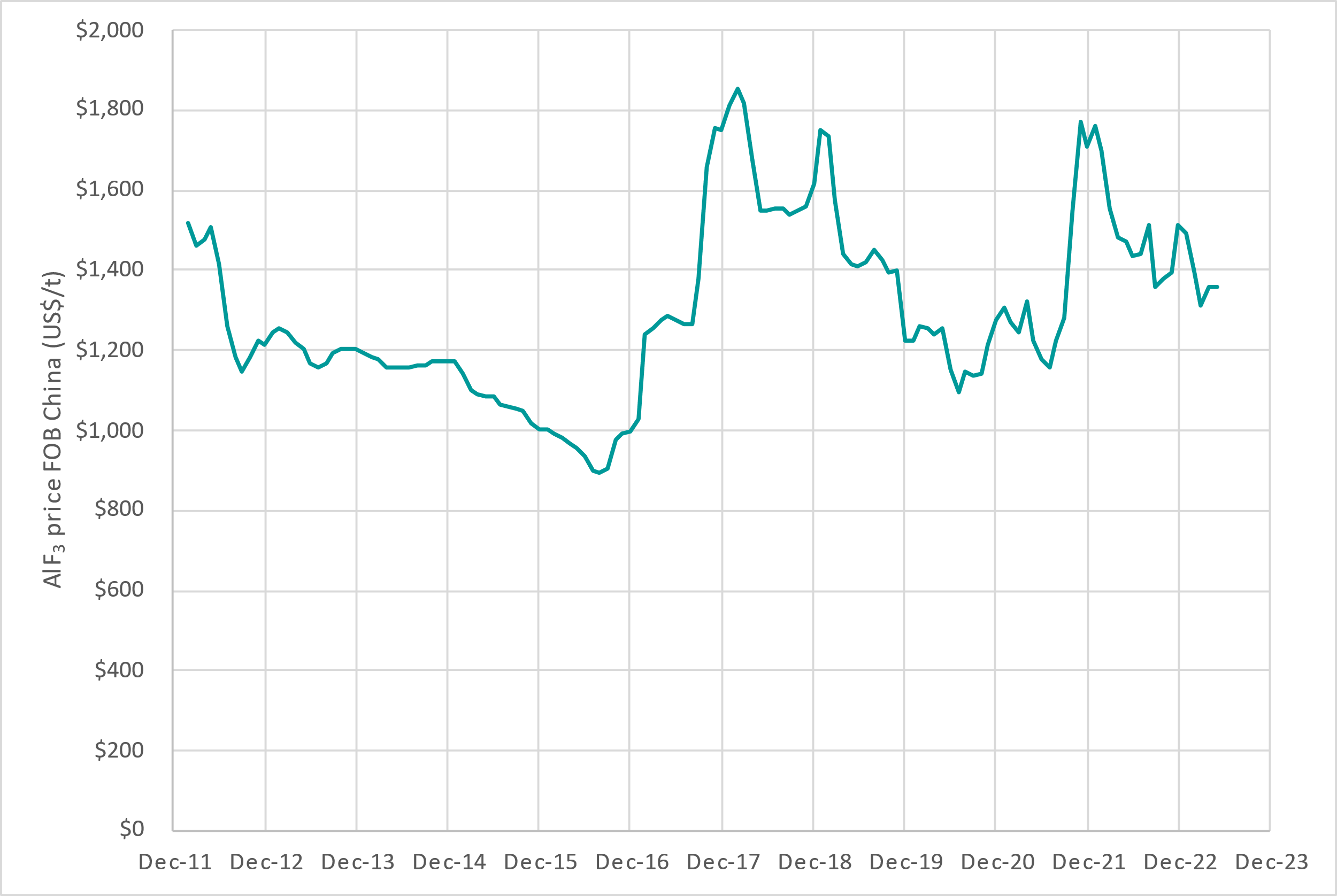Projects
Deep Leads (Rare Earth Elements)
Rare earths have many applications in a wide variety of industries. Permanent magnets are the most valuable application, representing over 90% of the total value of rare earths consumption. Permanent magnets are used in electric vehicles, wind turbines, smartphones and military applications. The four most important rare earths for permanent magnets are neodymium, praseodymium, dysprosium and terbium. Furthermore, the demand for these four ‘supermagnet’ rare earths is predicted to grow faster than for other rare earths.
Globally, most rare earths are sourced from hard-rock mines. These typically require large, costly processing plants and a significant lead time to reach production.
A less common source of rare earths is ionic adsorption clay (IAC) deposits, which have historically been mined only in southern China. A major advantage of IAC deposits is that the rare earths can be extracted from the clay via a low-cost desorption process. Secondly, they often exist at shallow depth. These advantages enable a project to be developed rapidly and at lower cost. Furthermore, IAC deposits typically contain a higher proportion of heavy rare earths compared to hard rock deposits, and low concentrations of radioactive elements such as uranium and thorium.
ABx is the first company to discover rare earths in Tasmania (Figure 1) and has reported a JORC-compliant mineral resource of 89 million tonnes at its Deep Leads-Rubble Mound and Wind Break resources.
ABx engaged Australian Nuclear Science and Technology Organisation (ANSTO) to conduct desorption tests, which found the highest extractions under relatively neutral conditions reported from any clay-hosted project in Australia[1],[2]. This proves the mineralisation to be of the IAC variety. Low-cost processing is crucial for clay-hosted rare earth deposits, and industry processing experts indicate that low-cost processing can only be achieved using desorption with low acid consumption. Additionally, the rare earths in the Deep Leads / Rubble Mound resource have the highest proportion of DyTb (4.3% of TREO) of any clay-hosted rare earths resource in Australia. These factors put ABx at the forefront for customers and countries seeking to diversify rare earths supply.
Following these excellent discovery and processing results, ABx has built significant momentum and will continue to conduct further exploration, which will include targeting new areas within its tenements that have geological features considered prospective for additional rare earths.
The ABx strategy is to produce a mixed rare earth carbonate that can be sold to existing refineries to increase their production. The ABx carbonate will be high in heavy rare earths and low in radioactive elements, which is expected to be attractive to many prospective customers. Market discussions with several potential customers endorse this strategy.

Figure 1: ABx leases in the 52 km wide REE province, including the new exploration licence application covering the area between Deep Leads and the Wind Break rare earths discovery located 16km ENE of Deep Leads.
Alcore (Hydrogen Fluoride and Aluminium Fluoride):
Alcore Strategy
Hydrogen fluoride is an essential chemical for the production of fluorocarbons and aluminium fluoride. Aluminium fluoride is an essential chemical for aluminium metal production.
Hydrogen fluoride is mainly produced from fluorspar, which is obtained from the mineral fluorite. Fluorspar is relatively high cost and has been identified as a critical material by the USA, Europe, Japan and Canada.
Australia does not mine any fluorite, or produce any fluorspar, hydrogen fluoride or aluminium fluoride, and so must import all its requirements. The Australian demand for hydrogen fluoride is small, and it is imported at high cost. Conversely, Australia is a significant producer of aluminium and so its demand for aluminium fluoride is high.
Australia is the largest producer of primary aluminium metal without its own domestic aluminium fluoride production, so Australian aluminium smelters rely entirely on imported aluminium fluoride. This is typically more than 80% from China, but this proportion was only 40% in 2021 when China production was lower, illustrating the supply risks (Figure 1). Aluminium fluoride prices have been above US$1,300/t for the last 20 months (Figure 2).
Most modern aluminium smelters produce excess bath, for which the only meaningful market is new smelters, which require bath to commence operations. Aluminium industry forecasts suggest that the global bath market will increasingly be in surplus, because far fewer new smelters are being constructed. All of the major global aluminium producers are eager for alternative applications for excess bath, to avoid the unpalatable options of on-site storage or landfill.
Alcore has developed a world-first process to recover hydrogen fluoride from aluminium smelter bath. This is combined with aluminium hydroxide to produce aluminium fluoride. Alcore is also investigating the use of dross (another aluminium smelter waste) and bauxite as alternatives to aluminium hydroxide as the source of aluminium. The use of dross or bauxite would further lower the production cost.
Alcore intends to construct commercial hydrogen fluoride and aluminium fluoride plants in Bell Bay, Tasmania. The aluminium source for the initial aluminium fluoride production is likely to be aluminium hydroxide, as this is lower risk and allows a faster path to production. Subsequent production may use aluminium from dross or bauxite to further improve the financial and environmental outcomes.
The initial plant is proposed to transform 1,600 tonnes per year of aluminium smelter bath into hydrogen fluoride and other industrial chemicals. A proportion of the hydrogen fluoride will be further processed to aluminium fluoride. The relative amounts of hydrogen fluoride and aluminium fluoride produced can be optimised to suit market demand.
Alcore’s longer term plan is to expand the plant by 15 times, which will process all of Australia’s aluminium smelter bath and supply more than 80% of Australia’s aluminium fluoride requirements.

Figure 1: Imports of aluminium fluoride from China into Australia (source: China Customs Statistics)

Figure 2: Aluminium fluoride monthly prices FOB China (source: China Customs Statistics)
Sunrise (Bauxite) Project: Binjour, Queensland
The ABx strategy is to selectively produce metallurgical grade, cement grade and fertiliser grade bauxite, with a focus on profitability.
The largest project is Binjour, with a JORC compliant resource of 37 million tonnes, supporting 20-25 years production. In February 2022, ABx entered a JV with Alumin for the development of the Sunrise Bauxite Project, comprising a bauxite mine at Binjour plateau and port operations at Bundaberg in Queensland[3]. Alumin is an Australian special purpose vehicle company associated with our strategic marketing partner, Rawmin India, having extensive experience in funding long term sustainable investments in projects involving mining and bulk-shipping of metallurgical grade bauxite to end users around the world.
It is anticipated that the mine at Binjour will export 500,000 tonnes per year of metallurgical grade bauxite in its first year of production, then scale up to full operational capacity of 1.5 million tonnes per year. ABx plans to begin exporting product in H1 2025.
DL130 (Bauxite)
In Tasmania, ABx has a JORC compliant resource of 13.7 million tonnes across three deposits. ABx plans to recommence bauxite mining in Tasmania by Q1 2024, at the DL130 Bauxite Project. The primary products are likely to be cement grade and fertiliser grade bauxite.
[1] ASX announcement 31 May 2022
[2] ASX announcement 2 February 2023
[3] ASX Announcement 28 February 2022



